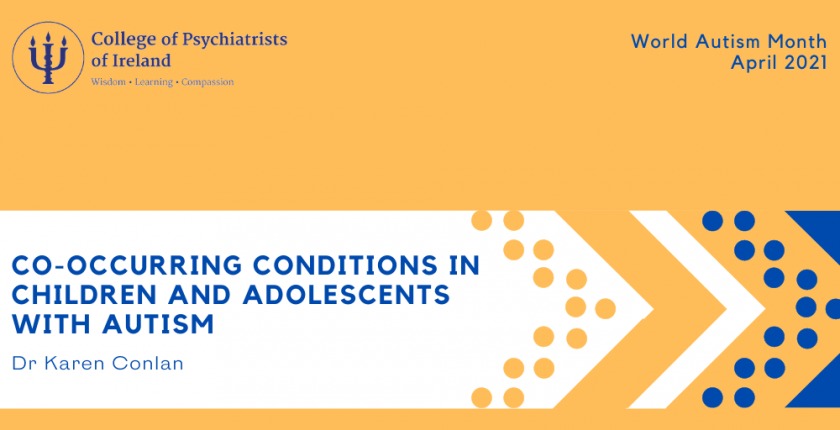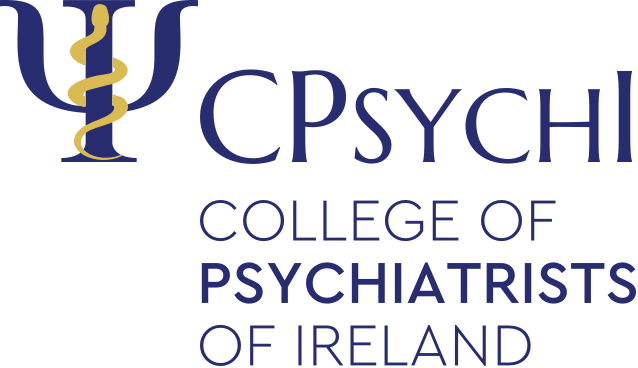Blog
World Autism Month: Co-occurring conditions in children and adolescents with autism
- April 22, 2021
- Category: Blog External Affairs & Policy Public Information Stakeholders

Following the blog post on comorbidities in adult autism, we’re looking at the presence of one or more conditions that occur in the presence of autism for children and adolescents. Like with adults, these comorbidities are common.
Read the article on comorbidities in adult autism here.
What is the problem?
Co-occurring conditions in autistic young people are the presence of one or more conditions in the presence of autism. Co-occurring conditions in autistic children and adolescents are common. Some common mental health disorders that are co-occur are ADHD, mood disorders, Oppositional Defiant Disorder, tic disorders and anxiety disorders including social anxiety, Generalized Anxiety Disorder (GAD) and Obsessive Compulsive Disorder (OCD).
There is difficulty in diagnosing co-occurring conditions in young people with autism. This is because of challenges due to the relationship between core symptoms of autism and psychopathology in the neurotypical population e.g restrictive and repetitive behaviours and compulsions in OCD, hyperactivity in autism and comorbid ADHD. Diagnosis can also be complicated by reduced ability of autistic patients to self-report symptoms.
Common co-occurring neurodevelopmental disorders in children with autism are intellectual disability, Developmental Coordination Disorder, specific learning difficulties e.g. difficulties with literacy/numeracy and speech and language disorders. Some comorbid medical/genetic disorders include epilepsy and genetic abnormalities such as fragile X syndrome.
There are also co-occurring behaviours which frequently occur in association with autism in children and adolescents such as behaviours that challenge, self-injury and sleep disorders.
Functional problems and disorders often co-occurring with autism in children are feeding problems such as restrictive diet, urinary incontinence or enuresis, constipation or altered bowel habit, sleep disturbance, visual or hearing impairment.
What is the evidence?
Regarding mental health disorders, mood and anxiety disorders are common in autistic children and adolescents. Presentations of mood disorders increase in adolescence. The most common anxiety disorders co-occurring with autism are social phobia, OCD and GAD.
Co-occurring medical conditions are also common. Epilepsy is present in 15-25% of children with autism. Abnormal EEGs are also common in young people with autism. Up to 50% of children with autism have gastrointestinal problems.
Studies have also shown that 53% of children between the age of 2-5 years with autism have sleep problems [vs 46% LD and 32% TD] (Krakowiak et al 2008)
Behaviours that challenge are common and present in 10-15% of children with autism. There is a risk of injury to the child and carers and behaviours that challenge frequently have an impact on social and academic engagement.
What are the solutions?
It is important for clinicians to consider the difficulties in diagnosing mental health disorders in autistic children due to difficulty in self-reporting symptoms and overlap with symptoms and behaviours in autism.
When it comes to treatment, it is always important to consider the co-occurring autism when treating the other disorder, e.g. when using antidepressants for depression or anxiety: young people with autism may have very idiosyncratic responses to SSRIs. Agitation and impulsivity have been reported in lower doses of SSRIs.
Co-occurring mental health conditions respond to many of the same interventions as typically developing young people, but with adaptations:
- There are adapted CBT programmes such as “facing your fears” for anxiety disorders, other adapted CBT programmes have been shown to be beneficial in OCD and autism. Adapted DBT can be used for autism with suicidal or destructive behaviour.
- Regarding co-occurring ADHD: management may involve implementing structure and routine, behaviour management and parent training specific to ADHD. Stimulant medications can be used to treat ADHD in autistic young people.
Resources
Muskens JB, Velders FP, Wouter GS (2017). Medical comorbidities in children and adolescents with autism spectrum disorders and attention deficit hyperactivity disorders: a systematic review. Eur Child Adoles Psychiatry. 26: 1093-1103
Cortese S, Wang F, Angriman M, Masi G, Bruni O (2020). Sleep Disorders in Children and Adolescents with Autism Spectrum Disorder: Diagnosis, Epidemiology, and Management. CNS Drugs. 34:415-423
Leader G, Tuohy E, Chen JL, Mannion A, Gilroy SP (2020). Feeding Problems, Gastrointestinal Symptoms, Challenging Behavior and Sensory Issues in Children and Adolescents with Autism Spectrum Disorder. Journal of Autism and Developmental Disorders. 50: 1401-1410
Howes OD, Rogdaki M, Findon JL, Wichers RH, Charman T, King BH, et al. Autism spectrum disorder: Consensus guidelines on assessment, treatment and research from the British Association for Psychopharmacology. Journal of Psychopharmacology. 2018;32(1):3-29.
